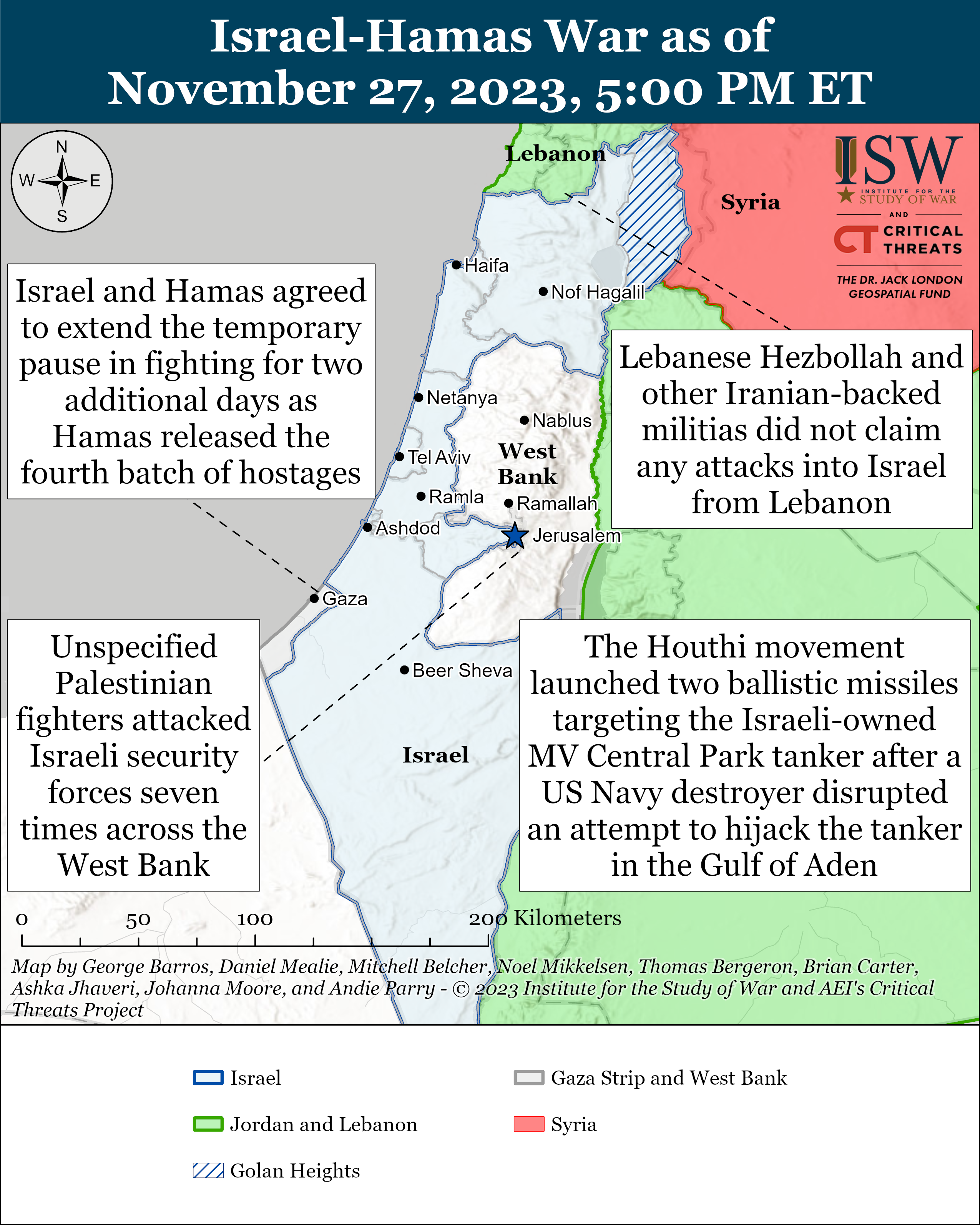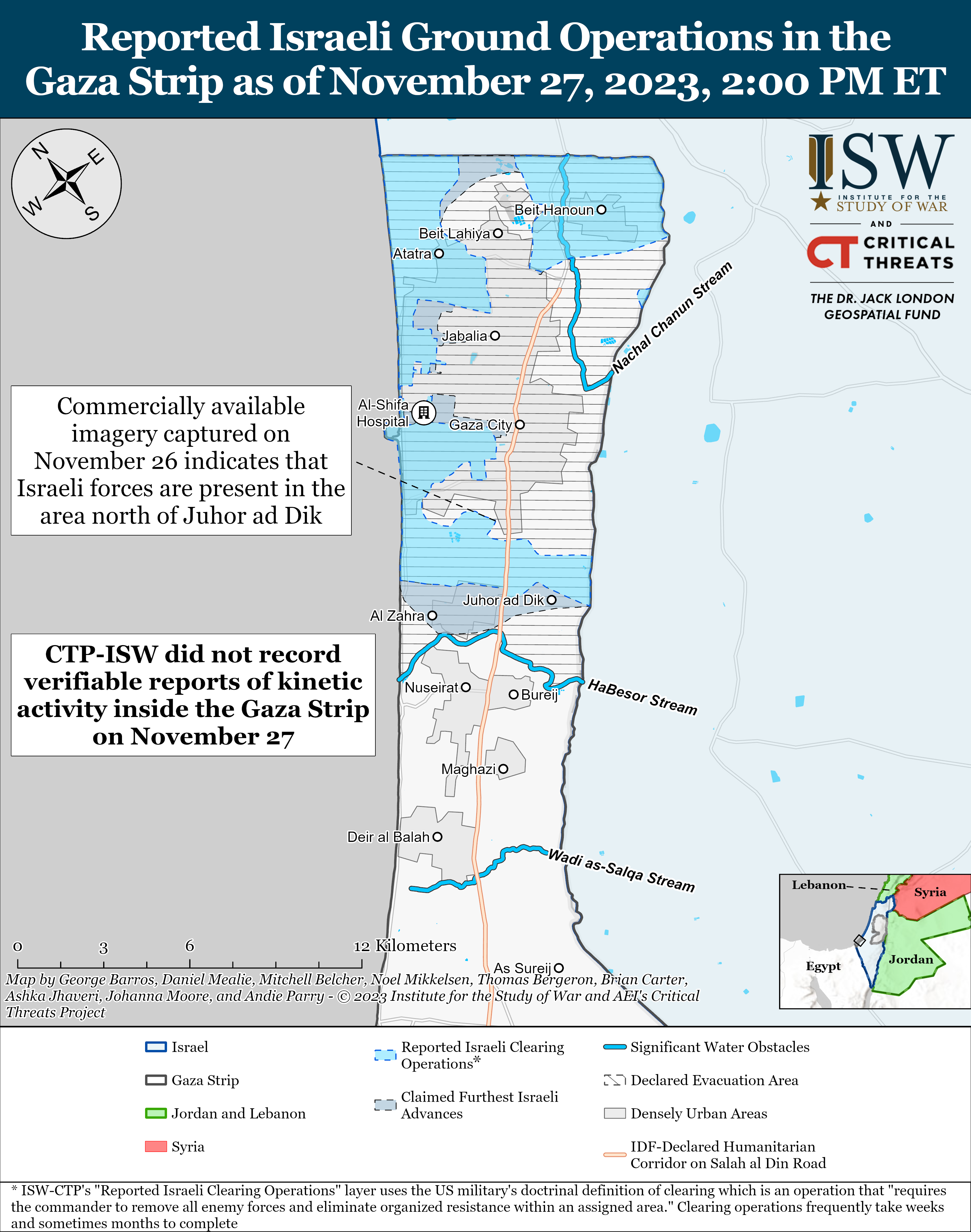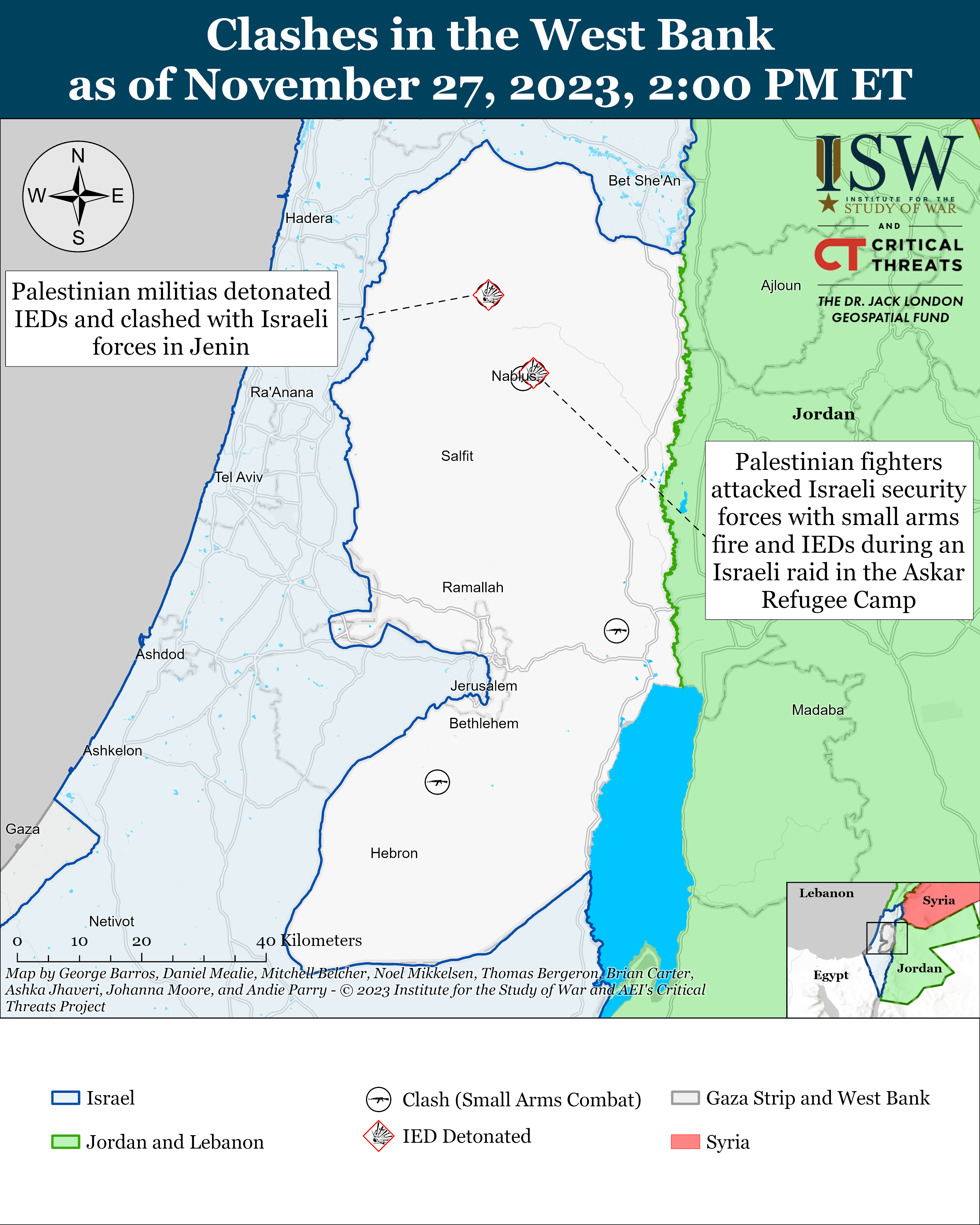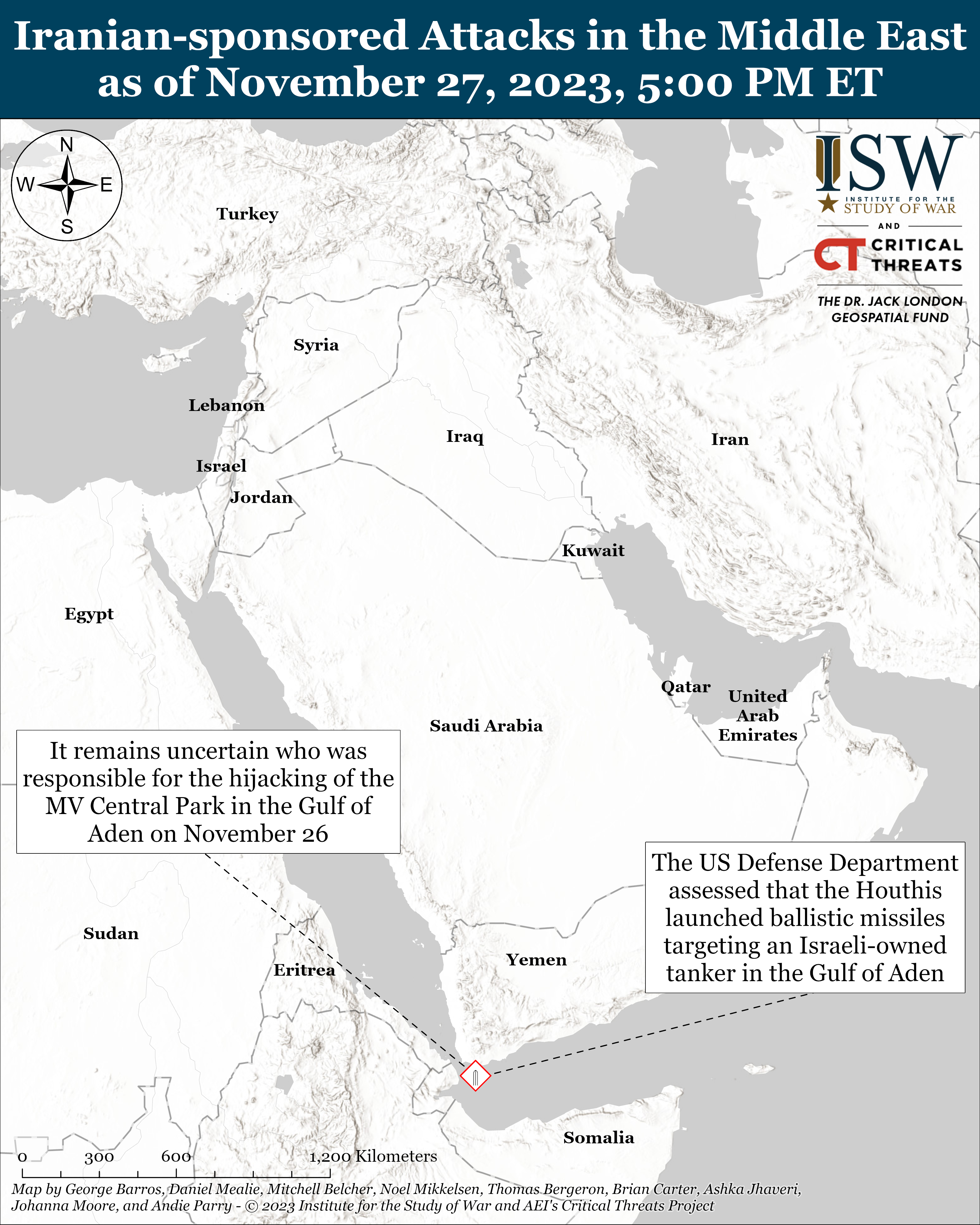TERRORIST- STUDY( MIDDLE- EAST)
(a) Hamas : (PALESTINE) https://en.wikipedia.org/wiki/Hamas
(b) Kata'ib Hezbollah: (IRAQ) https://en.wikipedia.org/wiki/Kata%27ib_Hezbollah
(c) Palestinian Islamic Jihad:(PALESTINE) https://en.wikipedia.org/wiki/Palestinian_Islamic_Jihad
(d) Izz ad-Din al-Qassam Brigades: (HAMAS - (PALESTINE) ) https://en.wikipedia.org/wiki/Izz_ad-Din_al-Qassam_Brigades
(e) MAPPING PALESTINIAN POLITICS: https://ecfr.eu/special/mapping_palestinian_politics/al_quds_brigades_aqb_islamic_jihad/
( f ) The Islamic Resistance in Iraq (JAMI): https://www.understandingwar.org/backgrounder/iran-update-november-21-2023
( g ) Profile: The Islamic Resistance of Iraq: https://www.washingtoninstitute.org/policy-analysis/profile-islamic-resistance-iraq
SOURCE:
( ) IRAN UPDATE, NOVEMBER 27, 2023: https://www.understandingwar.org/backgrounder/iran-update-november-27-2023
Iran Update, November 27, 2023
Andie Parry, Ashka Jhaveri, Kathryn Tyson, Peter Mills, Brian Carter, Amin Soltani, and Nicholas Carl
Information Cutoff: 2:00 pm EST
The Iran Update provides insights into Iranian and Iranian-sponsored activities abroad that undermine regional stability and threaten US forces and interests. It also covers events and trends that affect the stability and decision-making of the Iranian regime. The Critical Threats Project (CTP) at the American Enterprise Institute and the Institute for the Study of War (ISW) provides these updates regularly based on regional events. For more on developments in Iran and the region, see our interactive map of Iran and the Middle East.
Note: CTP and ISW have refocused the update to cover the Israel-Hamas war. The new sections address developments in the Gaza Strip, the West Bank, Lebanon, and Syria, as well as noteworthy activity from Iran’s Axis of Resistance. We do not report in detail on war crimes because these activities are well-covered in Western media and do not directly affect the military operations we are assessing and forecasting. We utterly condemn violations of the laws of armed conflict and the Geneva Conventions and crimes against humanity even though we do not describe them in these reports.
Click here to see CTP and ISW’s interactive map of Israeli ground operations. This map is updated daily alongside the static maps present in this report.
Key Takeaways:
1. Hamas and Israel completed the fourth swap of Hamas-held hostages for Israeli-held prisoners in accordance with their humanitarian pause agreement. Israel and Hamas agreed to extend the pause in fighting an additional two days to last until November 30.
2. Israel said that Hamas violated the terms of the humanitarian pause on November 25 by releasing a child without their parent in the prisoner swap.
3. Israel identified the Indonesian Hospital in Beit Lahiya as a location that Hamas uses for military activity prior to Israeli forces clearing the hospital, which contradicts claims that Israel raided the hospital without a stated reason.
4. Al Araby reported that Hamas is preparing to resume fighting with Israeli forces in the Gaza Strip.
5. Human Rights Watch reported that a rocket misfire likely caused the explosion at al Ahli Hospital in the Gaza Strip on October 17.
6. Palestinian fighters attacked Israeli forces seven times in the West Bank.
7. Lebanese Hezbollah (LH) and other Iranian-backed militias did not conduct any attacks into northern Israel.
8. The Houthi movement launched two ballistic missiles targeting the Israeli-owned MV Central Park tanker after the US Navy destroyer USS Mason disrupted an attempt to hijack the tanker in the Gulf of Aden.
Gaza Strip
Axis of Resistance campaign objectives:
- Erode the will of the Israeli political establishment and public to launch and sustain a major ground operation into the Gaza Strip
- Degrade IDF material and morale around the Gaza Strip.
Hamas and Israel completed the fourth swap of Hamas-held hostages for Israeli-held prisoners on November 27 in accordance with their humanitarian pause agreement.[1] Hamas released 11 Israeli hostages.[2] Israel is set to release three women and 30 others, including minors, in exchange.[3] Palestinian media sources, including Hamas-affiliated outlets, reported that Israel released some of the prisoners at the time of writing.[4] The parties had delayed the exchange briefly, as Israel and Hamas disagreed on which hostages Hamas would release.[5] Hamas had sent a list of hostages to be released to Israel on November 26 that Israel renegotiated on November 27, causing the delay.[6]
Israel and Hamas agreed to extend the pause in fighting an additional two days to last until November 30. Hamas announced that it would extend the pause by two days under the same terms as those of the original agreement, implying that Israel and Hamas would continue to exchange hostages/prisoners, humanitarian aid would continue entering the Gaza Strip, and Israel would continue to refrain from flying aircraft over the strip.[7] The Qatari Foreign Affairs Ministry similarly said that Israel and Hamas agreed to extend the pause by another two days.[8] A senior adviser to the Israeli prime minister acknowledged that the extension would occur once Hamas released the fourth round of hostages on November 27, which happened later in the day as reported above.[9] Israel has not made an official statement on the pause extension at the time of writing, however.[10] The White House confirmed the agreement to extend the pause.[11] The US National Security Council spokesperson said that Hamas agreed to release another 20 women and children over the next two days.[12] Senior Palestinian Islamic Jihad (PIJ) official Daoud Shehab acknowledged on November 27 before the two-day extension announcement that PIJ was “evaluating” the possible extension.[13] This statement suggests that PIJ leadership intends to continue observing the pause in fighting.
Hamas, Qatar, and the United States expressed a desire to extend the pause even further. Hamas Political Bureau member Khalil al Hayya stated that Hamas was able to find enough females and youth held hostage to extend the truce for two additional days but hoped to extend it for a longer period.[14] Hayya also said that Hamas seeks to enter a new deal that releases hostages other than women and children.[15] Senior PIJ official Daoud Shehab indicated that the release of Israeli soldiers would have an unspecified price, however.[16] The Qatari Foreign Affairs Ministry spokesperson similarly stated that Qatar hopes the pause will lead to a permanent ceasefire in the Gaza Strip.[17] US President Joe Biden lastly stated that he is working to extend the pause beyond the additional two days.[18] Israel has remained adamant that it will continue fighting to eradicate Hamas after the pause.[19]
Israel said that Hamas violated the terms of the humanitarian pause on November 25 by releasing a child without their parent in the prisoner swap. Two Israeli officials told CNN that there was a dispute on November 25 after Hamas released Hila Rotem—one of the child hostages—without her mother.[20] Hamas was holding Hila Rotem and her mother Raaya Rotem but claimed that it could not find the mother prior to the hostage release.[21] Hila Rotem said her mother was with her the entire time they were captive, and that Hamas separated them two days before the hostage release.[22]
The United Nations confirmed on November 27 that clean water and medical aid reached the northern Gaza Strip.[23] Hamas Political Bureau member Khalil al Hayya said in an interview with al Jazeera on November 26 that the United Nations is not doing the work required to deliver aid to the Gaza Strip.[24] Hamas leadership previously criticized the humanitarian aid flow to the northern Gaza Strip on November 24.[25] The Hamas-run Health Ministry and Qatar confirmed on November 26 that humanitarian aid is reaching the northern Gaza Strip.[26] Israel said on November 26 that Hamas established a checkpoint on the Salah al Din road to prevent aid from reaching northern Gaza Strip residents.[27] The Hamas, Qatari, and Israeli statements regarding the humanitarian aid flow to the northern Gaza Strip are consistent with the hypothesis that Hamas is redirecting aid before it gets there.
Israel identified the Indonesian Hospital in Beit Lahiya as a location that Hamas uses for military activity prior to Israeli forces clearing the hospital, which contradicts claims that Israel raided the hospital without a stated reason. A Palestinian journalist stated on November 27 that Israel did not claim that the Indonesian Hospital was a Hamas militant base before raiding it.[28] Israel published a video on November 6 explaining how the Indonesian Hospital was built above Hamas tunnels, however.[29] The hospital is furthermore directly adjacent to a Hamas tunnel entrance, according to a 2014 map published by the Wall Street Journal.[30] Israel has repeatedly claimed that Hamas uses hospitals for military activity. The IDF published a report on November 21 describing how its forces operating in the northern Gaza Strip uncovered weapons and access routes to underground infrastructure in and around hospitals.[31] The report includes a map of Hamas infrastructure in hospitals, including the Indonesian Hospital.[32] Palestinian journalists and local media reported that Israeli forces cleared the Indonesian Hospital in Beit Lahiya on November 23.[33]
Al Araby reported that Hamas is preparing to resume fighting with Israeli forces in the Gaza Strip.[34] The report said that Hamas is studying the movement of Israeli deployments on the ground and planning to use fresh units that it has not yet committed to combat.[35] Unspecified experts told al Araby that Hamas’ uncommitted forces constitute more than 75 percent of Hamas’ forces.[36] Israel estimates that it has killed between 1,000 and 2,000 Hamas fighters out of its military force of 40,000.[37]
Human Rights Watch reported that a rocket misfire likely caused the explosion at al Ahli Hospital in the Gaza Strip on October 17.[38] A munition hit a paved area inside the hospital compound, killing hundreds. The Human Rights Watch said that “the sound preceding the explosion, the fireball that accompanied it, the size of the resulting crater, the type of splatter adjoining it, and the type and pattern of fragmentation visible around the crater are all consistent with the impact of a rocket.”[39] The evidence makes the possibility of an Israeli-dropped bomb on the hospital highly unlikely, according to the report.[40] Israeli officials claimed that PIJ militants conducted a rocket attack that failed and hit the active hospital at the time.[41] Hamas, Lebanese Hezbollah (LH), and the Palestinian Front for the Liberation of Palestine condemned the Human Rights Watch report.[42]
Israel said Elon Musk has preliminarily agreed not to activate the Starlink satellite system in the Gaza Strip unless Israel permits him to do so.[43] The Israeli Communications Minister said that the understanding is vital in Israel’s fight against Hamas.[44] Elon Musk traveled to Israel and met with Israeli Prime Minister Benjamin Netanyahu on November 27.[45]
NOTE: The IDF has said that its forces are stationed along ceasefire lines across the Gaza Strip during the pause in fighting. CTP-ISW's map of Israeli clearing operations shows reported Israeli clearing operations and the claimed furthest Israeli advances. CTP-ISW will not be mapping the shift in Israeli operating areas during the humanitarian pause.
CTP-ISW did not record verifiable reports of kinetic activity inside the Gaza Strip or reports of attacks from the Gaza Strip into Israel on November 27.
West Bank
Axis of Resistance campaign objectives:
- Draw IDF assets and resources toward the West Bank and fix them there
Palestinian fighters attacked Israeli forces seven times in the West Bank on November 27. Palestinian fighters engaged Israeli forces in an hours-long clash and detonated an IED targeting Israeli forces in Jaba village near Jenin.[46] Palestinian fighters also engaged Israeli forces with small arms fire and IEDs in four refugee camps near Hebron, Jericho, and Nablus.[47] The IDF said on November 27 that it conducted overnight raids and arrested 20 individuals throughout the West Bank, including 15 Hamas fighters.[48] The IDF also claimed to have seized "five illegal vehicles” during the raids.[49] The IDF did not specify why the vehicles were illegal.
Southern Lebanon and Golan Heights
Axis of Resistance campaign objectives:
- Draw IDF assets and resources toward northern Israel and fix them there
- Set conditions for successive campaigns into northern Israel
LH and other Iranian-backed militias did not conduct any attacks into northern Israel on November 27.
The IDF did not conduct any airstrikes into Lebanon or Syria on November 27.
Iran and Axis of Resistance
Axis of Resistance campaign objectives:
- Demonstrate the capability and willingness of Iran and the Axis of Resistance to escalate against the United States and Israel on multiple fronts
- Set conditions to fight a regional war on multiple fronts
The Houthi movement launched two ballistic missiles targeting the Israeli-owned MV Central Park tanker on November 27 after the US Navy destroyer USS Mason disrupted an attempt to hijack the tanker in the Gulf of Aden. The USS Mason responded to a distress call from the Central Park on November 26 as unspecified hijackers boarded the tanker.[50] The Mason apprehended five hijackers.[51] US Central Command (CENTCOM) said on November 27 that “two ballistic missiles were fired” from Houthi-controlled territory in Yemen targeting the USS Mason.[52] The US Defense Department later amended this statement, assessing that it was ”more likely” that the Houthis targeted the Central Park than the Mason.[53] Senior Houthi official Mohammed al Bukhaiti implied the Houthis’ responsibility for the missile launch, claiming that the missiles targeting the Mason either "made impact [with the ship] or were intercepted,” because the missiles’ capabilities mean that a margin of error of ten miles is impossible.[54] The missiles landed ten nautical miles from the Mason in the Gulf of Aden.[55] The Houthis previously fired on a US Navy vessel in 2016, when Houthi fighters fired two ballistic missiles targeting the USS Mason.[56]
It remains uncertain who was responsible for the hijacking of the MV Central Park in the Gulf of Aden on November 26. Pentagon Spokesperson Brig. Gen. Pat Ryder said that the attempted hijacking of the Central Park “appeared” to have been carried out by Somali pirates and not the Houthis, though he added that the US military is “continuing to assess” the identity of the hijackers.[57] An unspecified senior US official told Fox News that the US Navy “pursued [the hijackers] towards Yemen” after the hijackers attempted to escape from the Central Park.[58] Senior Houthi official Mohammed al Bukhaiti claimed that the US Navy “fabricated” the rescue of the Central Park, despite implying Houthi responsibility for the ballistic missile launches.[59] Bukhaiti reiterated that the Houthis will only target ships belonging to Israel.[60] It remains possible that Somalis attacked the Central Park, given the presence of smuggling routes between Somalia and Yemen in the Gulf of Aden.[61] A retreat toward Yemen by Somali pirates would be consistent with Somali pirates familiar with smuggling routes and networks in Yemen.
Senior Iranian military officials presided over the annual Artesh Navy Day ceremony in Bandar-e Anzali on November 27.[62] The Artesh is Iran’s conventional military. The Iranian Armed Forces General Staff chief and the Artesh Navy commander reiterated Iran’s steadfast commitment to maintaining maritime security in the Persian Gulf and Caspian Sea.
The Iranian foreign affairs minister discussed the Israel-Hamas war with his Indian counterpart in Tehran on November 27.[63] The two officials emphasized the need for continued provision of humanitarian aid to the Gaza Strip.
Iranian officials are continuing attempts to pressure Israel into extending the pause in fighting by warning that Israel’s failure to extend it will precipitate an escalation of the war. An Iranian Expediency Discernment Council member and former IRGC commander warned of “harsh revenge” if Israel continues operations in the Gaza Strip.[64] The Iranian defense minister added that the United States and Israel will pay “a much heavier price” if Israeli operations resume.[65] The Iranian Foreign Affairs Ministry spokesperson emphasized Iran’s desire for a “lasting ceasefire” during his regular press briefing.[66] These statements are consistent with prior Iranian talking points surrounding the pause in fighting, as CTP-ISW previously reported.[67]
References
[1] https://twitter.com/idfonline/status/1729226453764444475 ; https://twitter.com/SafaPs/status/1729237285604835580
[4] https://t.me/newpress1/59936; https://t.me/QudsN/335650 ; https://twitter.com/ShehabAgency/status/1729268795754385706 ; https://twitter.com/ShehabAgency/status/1729269552981164156
[5] https://twitter.com/IsraeliPM/status/1729125086433804751 ; https://twitter.com/IsraeliPM/status/1729032384945979874 ; https://www.wsj.com/livecoverage/israel-hamas-war-gaza-strip-2023-11-21/... ; https://www.reuters.com/world/middle-east/israel-hamas-raised-concerns-o...
[6] https://twitter.com/manniefabian/status/1729165226824897010 ; https://twitter.com/IsraeliPM/status/1729173717903983077 ; https://www.wsj.com/livecoverage/israel-hamas-war-gaza-strip-2023-11-21/...
[8] https://www.cnn.com/2023/11/27/middleeast/israel-hamas-truce-extended-intl ; https://twitter.com/majedalansari/status/1729177252473274539
[9] https://www.foxnews.com/video/6341852223112 ; https://www.cnn.com/middleeast/live-news/israel-hamas-war-gaza-news-11-2...
[10] https://twitter.com/idfonline/status/1729226453764444475 ; https://www.wsj.com/livecoverage/israel-hamas-war-gaza-strip-2023-11-21/...
[17] https://twitter.com/MofaQatar_EN/status/1729168051759980939/photo/1 ; https://twitter.com/MofaQatar_AR/status/1729167018501325005
[19] https://twitter.com/IDFSpokesperson/status/1728440484623011908 ; https://twitter.com/idfonline/status/1728804410866753949 ; https://twitter.com/IDFSpokesperson/status/1728685177784902128 ;
[27] https://twitter.com/AvichayAdraee/status/1728754788152569935; https://twitter.com/TuiteroMartin/status/1728775404432114157/photo/1
[33] https://twitter.com/ytirawi/status/1727934472438288571; https://t.me/newpress1/59637; https://t.me/beitlahiaNews/8074
[37] https://www.washingtonpost.com/world/2023/10/21/hamas-documents-plans-israel-attack/; https://www.theguardian.com/world/2023/nov/26/idf-messaging-suggests-gaz...
[41] https://www.timesofisrael dot com/liveblog_entry/idf-confirms-gaza-hospital-blast-caused-by-islamic-jihad-rocket-misfire/
[47] https://t.me/QudsN/335373; https://t.me/QudsN/335420; https://t.me/QudsN/335448; https://twitter.com/idfonline/status/1729109577436725448
[50] https://twitter.com/JenGriffinFNC/status/1728918334044024929; https://twitter.com/CENTCOM/status/1728982985238843665
[57] https://www.reuters.com/world/africa/somali-pirates-likely-behind-attempted-tanker-seizure-pentagon-2023-11-27/
[61] https://www.reuters.com/world/iranian-supplied-arms-smuggled-yemen-into-...(Reuters),a%20weak%20and%20divided%20government.; https://issafrica.org/iss-today/an-ocean-of-weapons-arms-smuggling-to-so...
[62] https://defapress dot ir/fa/news/633683 ; https://defapress dot ir/fa/news/633730 ; https://www.iribnews dot ir/fa/news/4069951 ; https://defapress dot ir/fa/news/633733
[63] https://mfa dot ir/portal/NewsView/734762
[64] https://www.tasnimnews dot com/fa/news/1402/09/06/2996401
[65] https://defapress dot ir/fa/news/633386
[66] https://www.farsnews dot ir/news/14020906000092





No comments:
Post a Comment